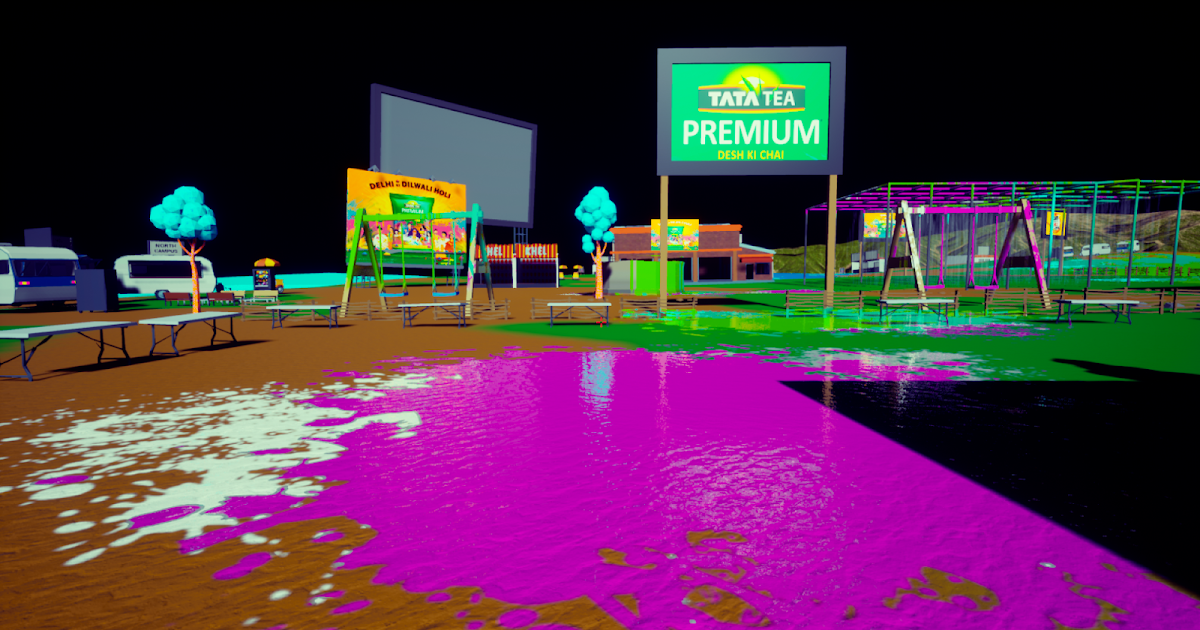One of the major events that have made the Web 3.0 headlines in the past week is the Indian FMCG Brand, Tata Tea’s Holi party that was held in the metaverse experiential arena. From local news websites to social media platforms, this party has been a talking point for the scope of advertising & consumer interaction in Web 3.0. Although most of it can be attributed to the party being one of its kind, what really makes it groundbreaking is that the Tata Consumer Goods team leveraged the new era of personalization and digital storytelling to enhance and reinforce its brand image.
Why Holi?
The Tata Tea Holi Party held on the 18th and 19th of March was an attempt to allure their consumers from the Northern Indian States to create a buzz about their new flavour. Holi is a remarkable festival for the people of India. It’s a festival of spring and colours. It represents the victory of good over evil and manifests the hope of the spring after the winter. Holi festivities usually include adorning loved ones with colours and gorging on sweets as an expression of immense joy. The party was bound to be a success considering the emotional appeal of the festival, the feel-good factor and the hope it represents. People could adorn their favourite avatars and enjoy the music put forward by the commendable Sachet-Parampara duo, the music–lyricist couple from India. The event created an experiential arena for the audience to celebrate the festival, enjoy themselves and most importantly, view Tata as an integral part of Indianness. Tata, as a brand, has always been deeply associated with the idea of India. They are reputed for their philanthropy and their advocacy for the preservation of Indian Culture. Holi is an important festival for a significant majority of the country. Over the past two years, people were deprived of this festivity due to the pandemic. So when Tata, the beloved Indian brand hosts a Holi Tea Party in the metaverse, which is an entirely new area of interest among the consumers, they are not only bridging the gap between the generations of its consumers but also affirming, beyond doubt, that they are indeed culturally significant. It is even more appropriate, to say the least, that the product being advertised is Tata Tea. Indians, like the natives of Britain, love their tea. It’s not just a regular beverage but a cultural artefact that Indians take the utmost pride in. Tata is outdoing itself by integrating personalized storytelling and cultural heritage through the Web 3.0 experiential arena.
Why Web 3.0?
The primary essence of the Web 3.0 arena is decentralization – the highly localized setup of a global economy. Advertising in the contemporary scenario has moved on from celebrity brand endorsements and emotional conditioning. The future of advertising will be based on the immersive technologies of Web 3.0. The consumer has to experience the product and everything that it represents. It’s not about the Tea but rather what it signifies within the given social context. Tata consumer goods are doing great because they don’t just focus on conveying the message of representation but rather, they also construct the context within which this message is to be perceived. This market thrives on the idea of oneness, culture and collective identities. In order for a product to be undeniably appealing to a large community, it has to be associated with the collective identities of the said community. Web 3.0 is the most apt avenue to venture into the future of immersive and experiential advertising, especially for fast consumer good brands like Tata. It’s not enough to produce a good product, it has to represent something and that message has to be immersive enough for the new age consumer who is now increasingly moving towards a decentralized setup of individualization.




